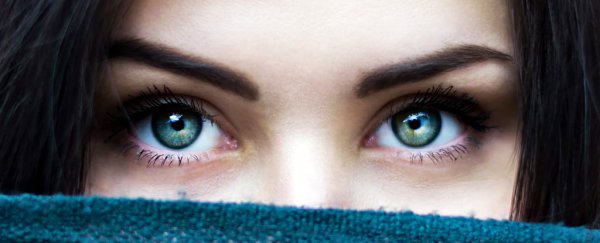THE EYES
“I See You”
The eyes can be best described as
the organ of sight. The eyes helps us to have a clear vision on objects. With
each part of the eye, we are better able to see, the parts are
the cornea, iris, pupil, lens, sclera, retina, macula, optic nerve, choroid and vitreous. The cornea, a clear window at the front of the eye, covers the iris and
the pupil. The iris, or coloured part of the eye, surrounds the pupil. It
controls how much light enters the eye by changing the size of the pupil. The
pupil, or black dot at the centre of the eye, is an opening through which light
can enter the eye. A clear lens, located behind the pupil, acts like a camera
lens by focusing light onto the retina at the back of the eye. The retina is a
light-sensitive inner lining at the back of the eye. Ten different layers of
cells work together in the retina to detect light and turn it into electrical
impulses. The sclera, or white part of the eye, protects the eyeball.


For people with normally
functioning eyes, the
following sequence takes place. First the light reflect off the objects we are looking at, then the light rays enter
the eye through the cornea at the front of the eye. The light passes through a
watery fluid (aqueous humor), and enters the pupil to reach the lens. The lens
can change in thickness to bend the light, which will focus it onto the retina
at the back of the eye. On the way to the retina, the light passes through a
thick, clear fluid called a vitreous humor. The vitreous humor fills the
eyeball and helps maintain its round shape. The light then reaches the back of
the eye and hits the retina. The retina translates the light into electrical
impulses which are then carried to the brain by the optic nerve. Finally, the
visual cortex (or centre) of the brain interprets these impulses as what
we see.


Nearsightedness Vs Farsightedness
Nearsightedness (Myopia) means that you can see objects clearly, that appears nearer,
but objects farther away appear to be blurry. You will be able to see objects
up close such as a book when reading, but may struggle to read road signs,
screens and other objects if they are too far away. This normally happens when the eyeball is too long.
Because the eyeball is longer than normal, light cannot focus properly through
the lens and cornea. So when you look at an object, the light rays that hit
your eye will end up focusing in front of the retina instead of focusing
directly at the retina. This is why objects farther away become more blurry
compared to objects up close. The focusing distance is further. Nearsightedness
can also be caused by the curvature of the lens of the eye. If the lens is too
curved, this will throw off your focusing point as well. Your risk for myopia
increases slightly if others in your family have it, as there is a genetic
element that is a factor. The
lens that are used to correct nearsightedness are called concave lens, they are thinnest at the center
and thicker at the edge.
 Farsightedness
(Hyperopia) is the
opposite of nearsightedness, this means that objects farther away are seen
clearly, while objects up close are blurry. Both myopia and hyperopia have to
do with how light focuses in the eye and where. With farsightedness, the
eyeball is either too short or there is not enough curvature of the lens for
objects to focus properly. Light will focus at a point beyond the retina
instead of in front of the retina or directly on its surface. This causes
blurry vision up close. Hyperopia is less common than myopia. It is also much
harder to detect in common vision screenings (such as those conducted by
schools). However, a comprehensive exam can detect hyperopia, which is why it’s important to see
your eye doctor for a proper diagnosis. The lens that are used to correct
farsightedness are called convex lens.
Farsightedness
(Hyperopia) is the
opposite of nearsightedness, this means that objects farther away are seen
clearly, while objects up close are blurry. Both myopia and hyperopia have to
do with how light focuses in the eye and where. With farsightedness, the
eyeball is either too short or there is not enough curvature of the lens for
objects to focus properly. Light will focus at a point beyond the retina
instead of in front of the retina or directly on its surface. This causes
blurry vision up close. Hyperopia is less common than myopia. It is also much
harder to detect in common vision screenings (such as those conducted by
schools). However, a comprehensive exam can detect hyperopia, which is why it’s important to see
your eye doctor for a proper diagnosis. The lens that are used to correct
farsightedness are called convex lens.

No comments:
Post a Comment